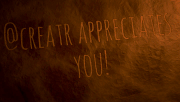RE: Stan's BEOS Troll FUD Patrol
Greetings, @stan,
Thanks for another great BEOS article. Thank you and your team for the generosity you're showing to BTS holders who believe in what you're doing.
I have been a professional developer most of my life, beginning with microcomputers back in the mid 1970s. I am also an amateur astronomer and a "space head," still wanting to reach orbit one of these days. I developed the initial tracking software for the 1.2 meter Tierra Astronomical Institute telescope:
I also formed and operate an enterprise that uses 3D printing, not only to produce our product, but to fabricate the tooling we use for building the product.
Consequently, while I'm I'm happy to see projects like Quintric and Ruon, I am absolutely thrilled to be learning more about Sovereign Sky, Biquitous, and Mission Space, and to begin trying to understand how they are connected with and empowered by BEOS.
I would like (eventually) to develop some projects in the BEOS sphere, perhaps even a potentially unique DAO that is growing in the back of my head. Considering those hopes, I realize that I have a steep learning curve ahead of me.
Could you point me in the direction of what I need to learn to successfully develop a project on the BEOS blockchain?
Thanks in advance for any guidance you may be able to offer.
Kindest regards,
- @creatr

What a beautiful instrument! I'll be developing the pointing control software for missionspace.one telescopes. I could probably use your help. Did you interface to a database of space objects to compute your pointing angles?
I interfaced to a substantial database which was essentially a catalog of stars and interesting objects (Messier objects, etc.) associated with their right ascension and declination positions on the celestial sphere. But at that time I was not using object positions to orient the scope; it's equatorial mount was nominally aligned to a polar axis, and I was using shaft encoders, step counts, and a time reference to drive the scope to find those objects.
This was quite a few years back (mid to late 1980s?), Stan, so I am a little "fuzzy" when it comes to remembering all the details.
I was using a monochrome CRT IBM PC running at that time on what was probably an 80186 processor. When I got involved, the institute had unfortunately already contracted for some custom stepper motor driver hardware that was kinda quirky. The firmware was closed source, and I had to disassemble it in order to fix some severe bugs that popped up. :O
The institute eventually replaced my original software with some more visually oriented star-map type stuff. Nevertheless, that project was some of the most fun I've had during my long and very sketchy career. :D
Summarizing, I would absolutely love to help you with pointing control for orienting missionspace.one telescopes...
Hi Stan,
UPDATE:
I poked around and dug up my project notebooks for the observatory. Thumbing through them brought back a lot of details.😃
I wrote the original observatory software from scratch, based on a collection of formulas in a then-current edition of this book. The primary software, written in C, ran on an IBM PC. The PC was situated in an insulated control room where we could sit and operate the telescope and instrument packages without freezing our tails off... 😉
I also wrote a separate, somewhat simpler code system that employed a PSION Organizer II handheld computer in the role of "guide paddle" that we used when standing on the open observatory floor under the 1.2 meter instrument.
The PC software imported a modified version of the Yale Bright Star Catalog circa 1987, that had been modified to reduce its size to fit on a contemporary microcomputer and extended to include Messier and other objects.
I of course realize that controlling a space telescope will have a rather different (and fascinating!) set of problems to be solved, such as awareness of what sector of sky is presently obscured by the Earth, probably Sun avoidance (unless equipped with solar filters?), and initial orientation within the celestial sphere.
Stan, I would really love to discuss all this with you sometime at your convenience... 😉